This Sourdough Starter is pretty darn easy to do and a great option for delicious homemade baked goods! A sourdough starter doesn’t have to be a chore, and the end result is worth the patience in the beginning. If you like homemade treats try my Sourdough Pretzels!
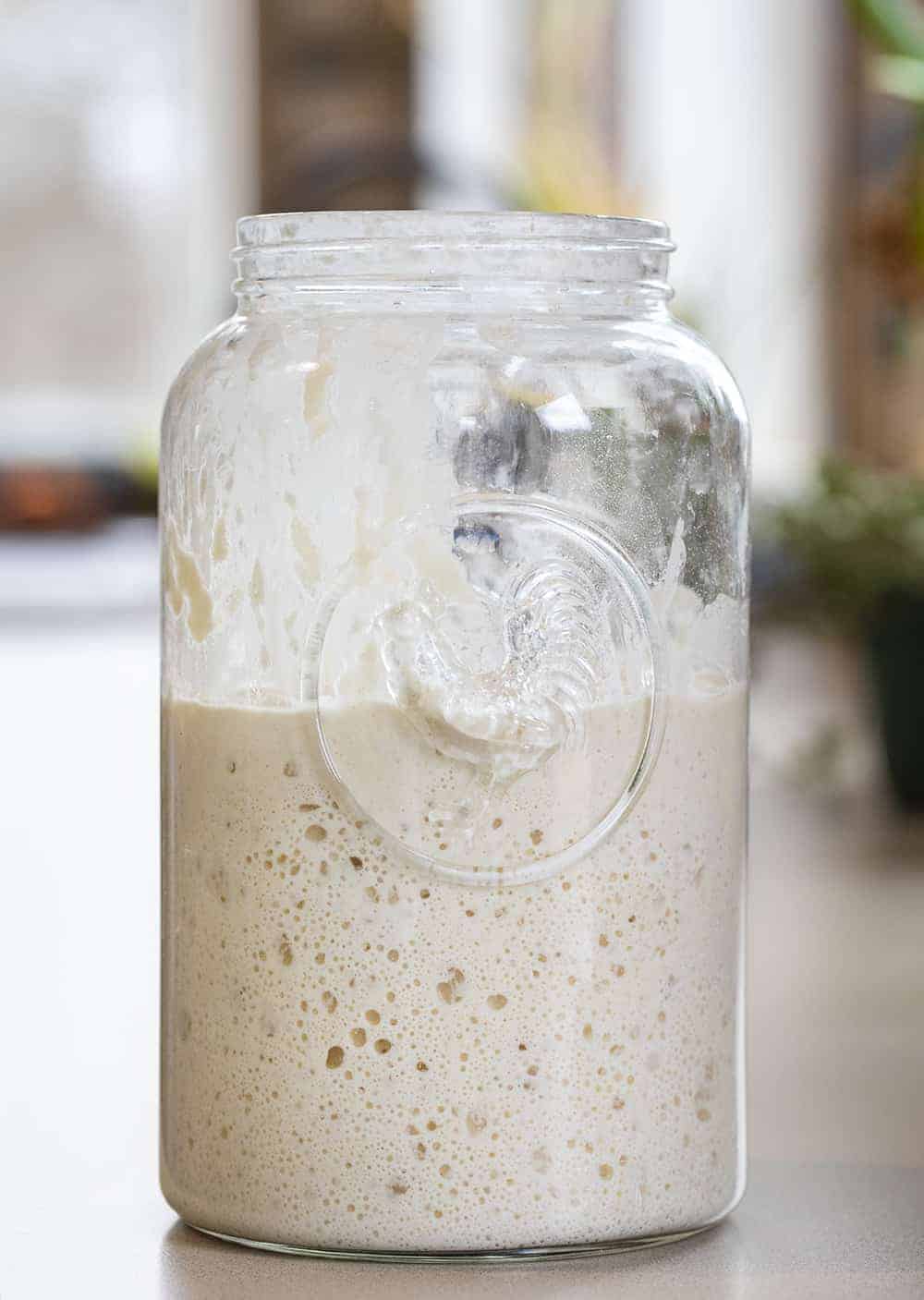
Sourdough Starter
I have to start out by saying that this is how *I* do a starter. I have watched every expert under the sun and read every book and let me tell you something… they are all different. So I have been testing and testing and retesting and using life experience to determine what works best for me. Well, I finally decided on what worked best for me, and it could not be easier and straight forward. The ingredients are simple: flour and water. And, with just two measurements to remember, the feeding is a piece of cake (or should I say bread😉) as well!

Getting your Sourdough Starter Started
Now if you want to bring science into it, the type of flour and type of water you use are important. They can produce a better product. But I am here to tell you that you can absolutely use all-purpose bleached flour from Dollar General and it will still be ok. Make sure you have the following materials and ingredients on hand:
- Jar & Lid – I prefer glass, you don’t want to use metal or plastic. If you don’t have a lid use a paper towel and rubber band. A good size jar to have on hand for a sourdough starter is a quart (32 ounces) or something close to that capacity.
- Flour – I prefer organic unbleached all-purpose, but also love whole-wheat and bread flour. Or, give rye flour a try.
- Water -Purified is best. Have chlorinated tap water (as most people do)? You can use bottled water or just set the water out uncovered for 24 hours before using it to feed your starter. This allows the chlorine to evaporate so it won’t kill the wild yeast.
That’s it for supplies! Now, let’s get to making the starter.
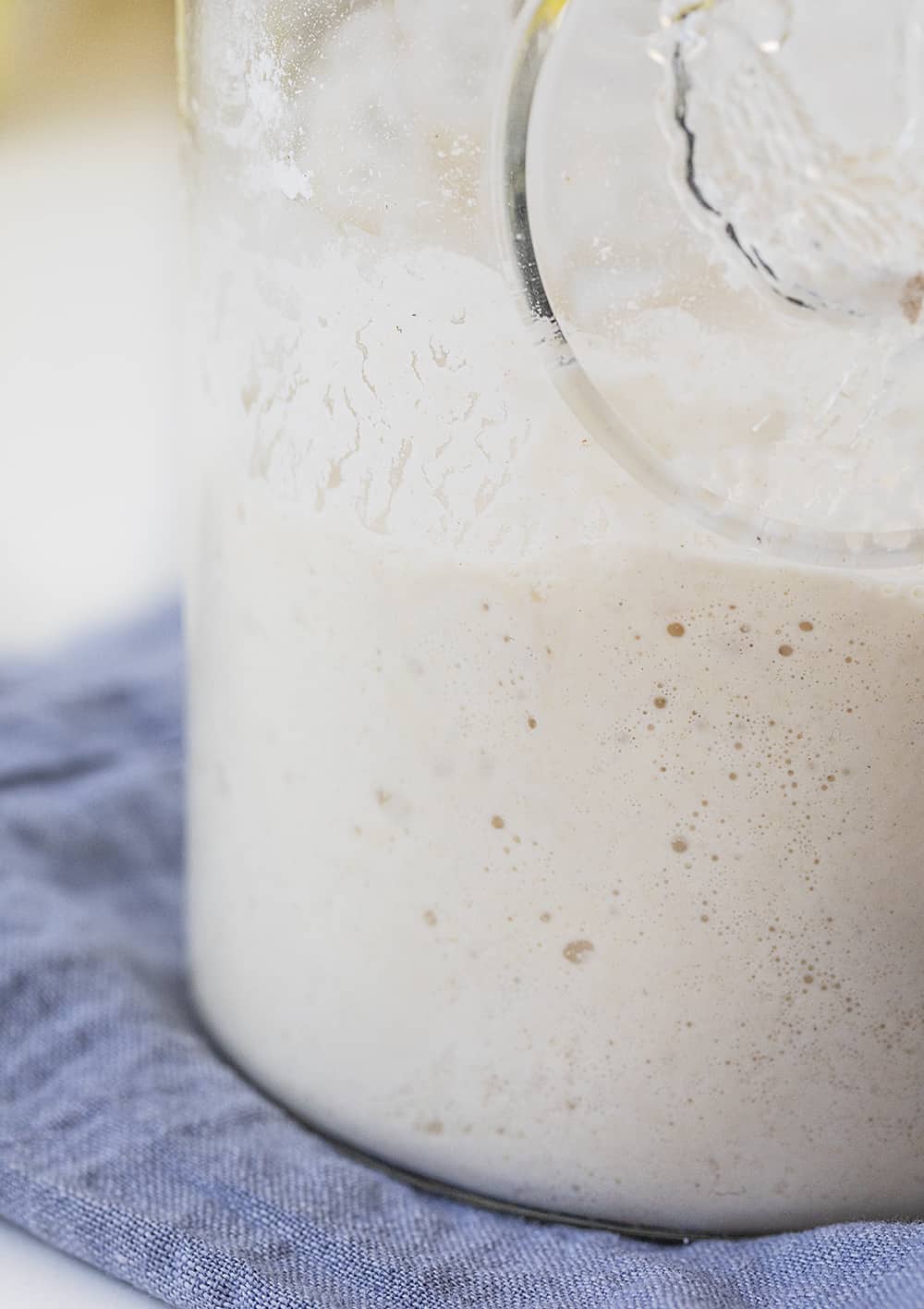
How to Make a Sourdough Starter
Remember these amounts: 1/2 cup flour and 1/4-1/3 cup water. These are the only measurements you will need to remember throughout this entire process of creating your sourdough starter. And trust me, you will use those measurements a lot with all the ‘feeding’, going on! After all, the goal is to get those microorganisms to work for that sour and fermented flavor that sourdough is known for.
To begin, add the flour and water to a jar and stir well. Try not to use a metal spoon. After all, Grandma said she always uses the handle of her wooden spoon to stir. Now gently cover the jar (do not seal it closed) and let it sit in a warm place (70°F is best) for 24 hours. The best option for a cover is a paper towel and rubber band. Or, just remember to keep the jar lid loosely sealed. Try to keep it in an area of your house that is somewhat warm. Very cool rooms tend to slow the action of a starter. Wait 24 hours before checking the mixture.

‘Feeding’ the Sourdough Starter
With sourdough starters, you will hear the term ‘feeding’. This is simply adding the flour and water to the mixture to keep the microorganisms working. Remember the measurements I told you to get ingrained in your brain? The 1/2 cup flour and 1/4-1/3 cup water is all you will need throughout the ‘feeding’ process.
Day 2: After 24 hours, check the mixture for bubbles. If you see bubbles, add the flour and the water, mixing it well, and let it sit for the next 24 hours. If you don’t see bubbles, do not get discouraged! It sometimes takes a couple of days for the science of it all to work. Just wait another day (or even two) until the first feeding.
Day 3: After another 24 hours, check for bubbles. If you do see bubbles, remove half of the starter, add the 1⁄2 cup flour and 1⁄4-1/3 cup water and stir thoroughly. Let sit 24 hours. Oh, and don’t get rid of the starter you removed! I will give you some ideas on how to use this in the end.
For the third feeding, remove half of the starter (but don’t throw it out!), and feed with 1⁄2 cup and 1⁄4 cup water, stirring thoroughly. Let sit 24 hours. (And yes, you can begin a new starter with the discard! Try adding a new kind of four! Or simply use to make crackers or pancakes.)
On days 4, 5, 6 you can feed it 2 times a day with those measurements that are sure to be memorized at this point😀. Continue this routine (discarding before feeding) until the starter is consistently bubbling and doubling in size within 8 hours of each feeding.
It is now ready to use for a perfect Sourdough Bread!
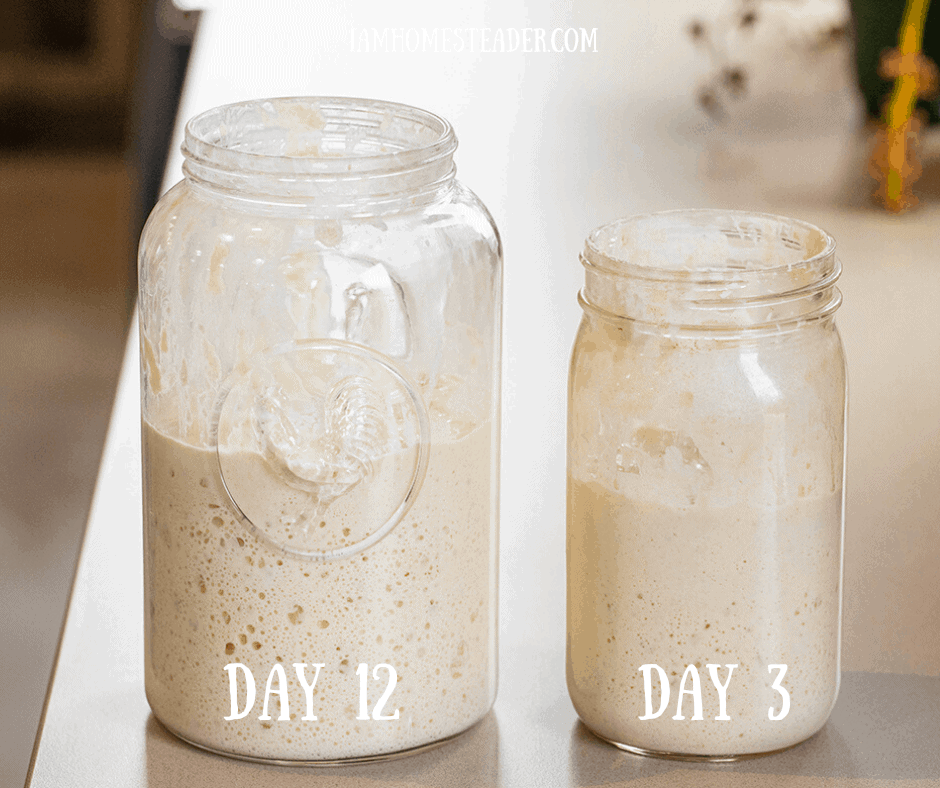
How to Store a Sourdough Starter
After all the feeding and you know you have a strong, active starter, you can store the starter in the refrigerator and feed it about once per week. When you plan to use the starter, pull it out of the refrigerator 24 hours in advance to feed it and allow it to warm up and grow.
These starters get better with age, so don’t think you have to use it right away! Sourdough starters are hearty, so they last quite a while. But, like all living things, it can get ‘sick’ or go bad. If it turns pink, red, moldy, or gets a really putrid smell, throw it out. After all, you now know how to start again!
What Flours Can You Use in a Sourdough Starter?
All grain-based flours will work beautifully in a starter. A few examples are:
- Rye
- Bread Flour
- Rice
- Whole Wheat
- Einkorn
Truesourdough.com has a great comprehensive guide to flours.
Vanilla and Bean has a great guide to Gluten-Free sourdough starter.
What to do with the Discard?
As I said, don’t throw out the sourdough starter that you remove each feeding time to make room for the starter to rise. Just make sure your sourdough starter is room temperature (about 70°F) before using it in baking. Here are some ideas on how to use (and enjoy) the excess sourdough starter.
- Sourdough Bread (not until day 6 or 7)
- Sourdough Pancakes (seriously SO GOOD!)
- Sourdough English Muffins
- Sourdough Brownies
- Sourdough Pretzels
- Cinnamon Rolls (the best!)
- Banana Bread
- Sourdough Crackers (like saltines)
- Sourdough Chocolate Chip Cookies
- Sourdough Pasta Noodles
As I mentioned, this is how *I* make a starter. King Arthur recommends 1 cup flour and 1/2 cup water and they suggest you weigh ingredients with a scale. (This is the same equivalent that I use, just doubled.) Pro Home Cooks has a great free downloadable Sourdough guide for those who really want to understand the science behind it.
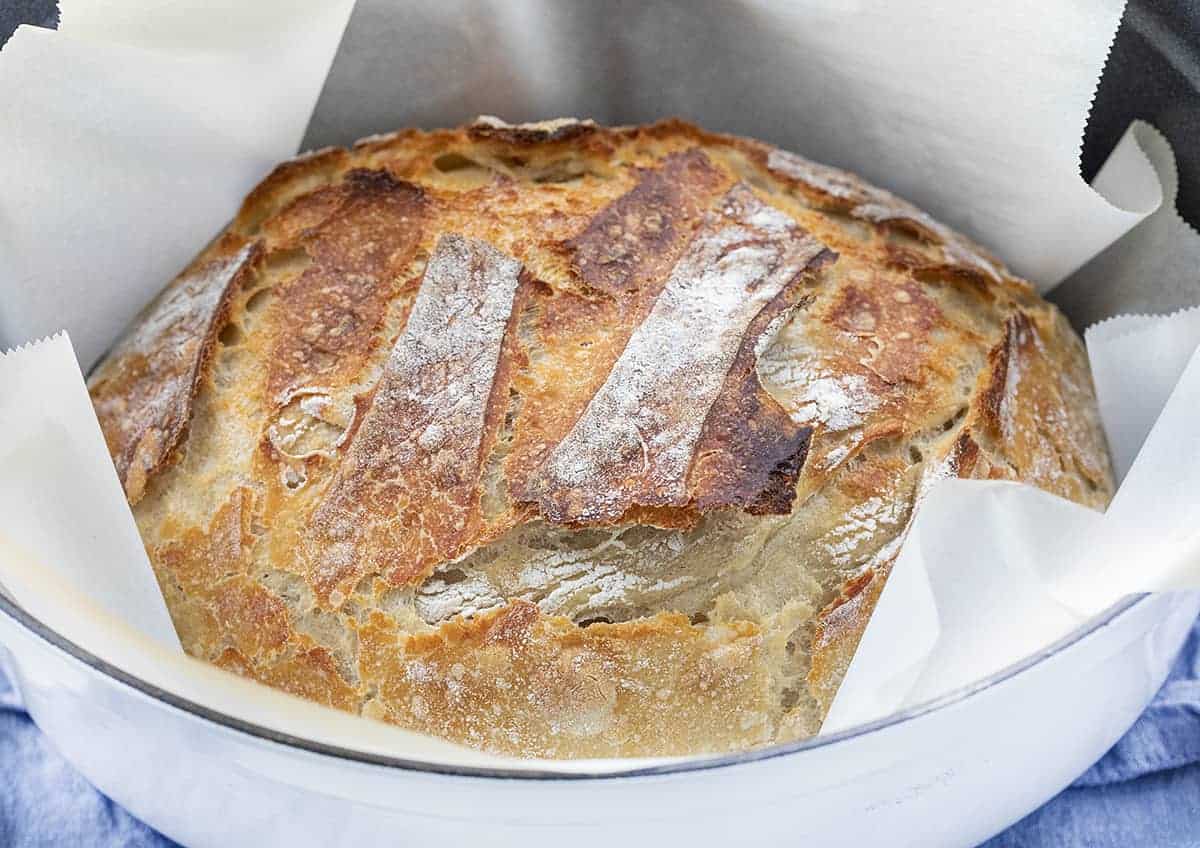
Here is the recipe for Simple Sourdough Bread!
More Sourdough Recipes

Sourdough Starter
Ingredients
- ½ cup flour, whole wheat or unbleached all-purpose
- ¼-⅓ cup water*, 75°F is ideal
- 1 glass jar, or bowl (about 32 ounces)
- 1 paper towel
- 1 rubber band
Instructions
TO BEGIN
- Start the process by adding ½ cup whole wheat flour and ¼ cup water to the jar. (If you need more flour to reach a pancake batter consistency, you can add up to ¼ cup more.)
THE FIRST FEEDING
- Stir thoroughly and cover with a towel and rubber band. Let sit for 24 hours at room temperature. (Try to keep it in an area of your house that is somewhat warm. Very cool rooms tend to slow the action of a starter.)
- After 24 hours, check the mixture for bubbles. If you see some, add ½ cup all-purpose flour and ¼-⅓cup water. If you don’t see bubbles, give it a stir and let sit 24 more hours.
THE SECOND FEEDING
- Check for bubbles again. If you do see bubbles, remove half of the starter, add ½ cup all-purpose flour and ¼-⅓ cup water and stir thoroughly. Let sit 24 hours.
THE THIRD FEEDING
- Remove half of the starter, and feed with ½ cup all-purpose flour and ¼ cup water, stirring thoroughly. Let sit 24 hours.
ADDITIONAL FEEDINGS
- On days 4, 5, 6 you can feed it 2 times a day, if you want and plan on using it.
- Continue this routine until the starter is consistently bubbling and doubling in size within 8 hours of each feeding.
- From this point (or even on day 5), you can store the starter in the refrigerator and feed it about once per week. When you plan to use the starter, pull it out of the refrigerator 24 hours in advance to feed it and allow it to warm up and grow.
Video
Notes
Did you make this recipe?
You can tag me at @iamhomesteader.
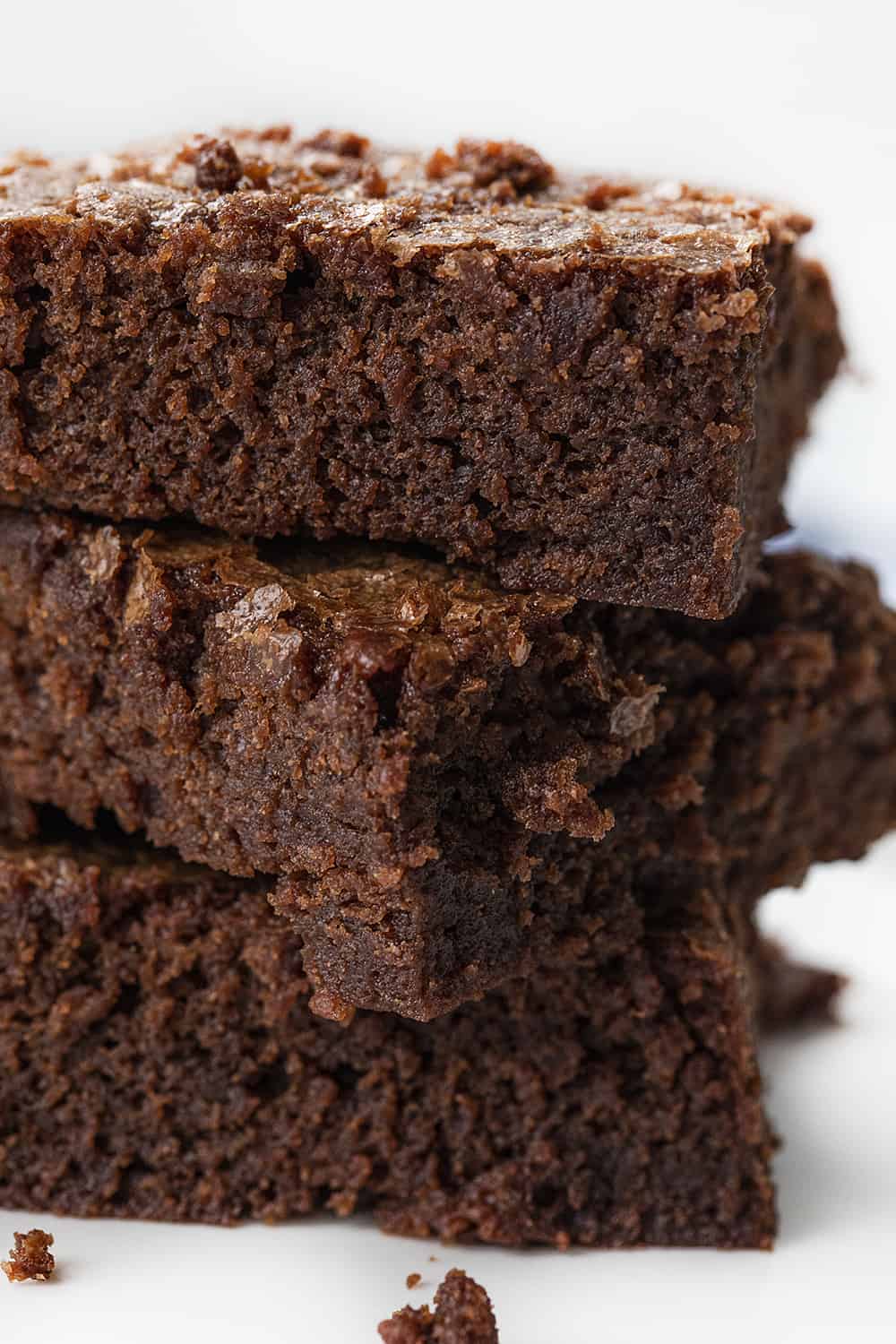
I used this starter to make seriously decadent Chocolate Sourdough Brownies!

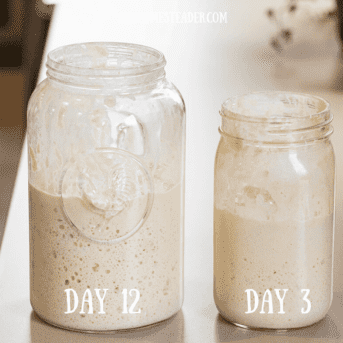
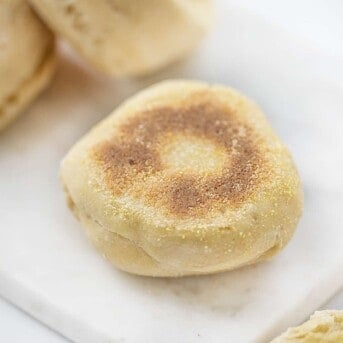
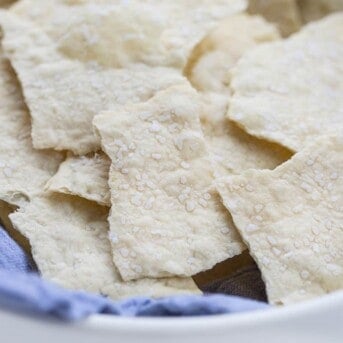
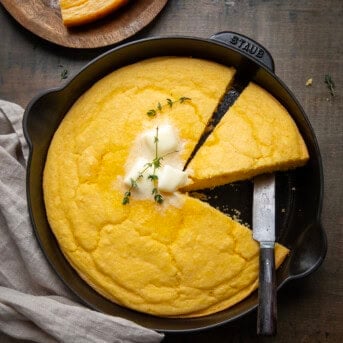


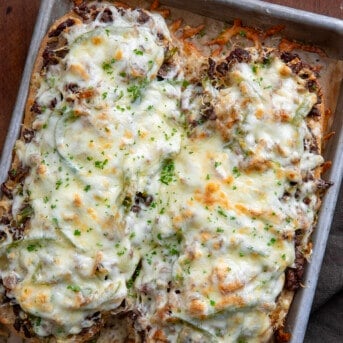
Thank you!! One question….
On days where it’s fed twice a day… is it 1/2 cup flour and 1/4 cup water twice a day.. or 1/4 cup flour and 1/8 water twice a day?
Its the same amounts as previous days.
This question has been asked and ignored, maybe for a good reason haha (unless I missed a Q&A).
On days where it’s fed twice a day… is it 1/2 cup flour and 1/4 cup water twice a day OR 1/4 cup flour and 1/8 water twice a day?? I can forsee space becoming thin in my 32oz Jat. Thank you for your guidance!
Its the same amount as previous feedings, so 1/2 cup 2x a day.
I love all your stuff and trying this starter tonight but I sure had to use a lot more than 1/3 cup water to make the starter more like pancake batter. I really want to knock this sourdough thing out of the park.
Thank you, thank you finally a receipe that was simple and very helpful eg [if no bubbles after 24 hrs just wait for48 hrs] Finally I have a sour dough starter. Sherry
When I get to the days that I am feeding my starter twice a day do I still throw half of it away
What if there is no bubbles
Try putting it in a warmer spot or start over. It should be active and alive right away.
Hi! So I just fed my starter for the first time, and forgot to discard…is that going to cause a problem? Also, when you do discard and save it, do you just add more flour and water to the discard to create a new starter? Same measurements, along with the glob of discard? Just want to make sure I’m doing it right. I want to bake so many things if this turns out right, so I’d like to make sure I’m following the correct way with how to treat the discard. Thank you!
It shouldn’t be a problem if you forgot the discard, you can discard at any time. When I remove discard I want to save/use I may feed it and treat it like a new starter.
Thanks for the help!
I’ve tried to start this twice. My starter (after mixed the 1st day) does not look liquidy. Is this how it’s supposed to be?
You may need to add more water
Can’t wait to try this! Started it today. Figured it was a project since I got a new old Dutch oven
After 5 days still has not doubled in size. Just get very small bubbles on the surface. I keep the starter in the oven with the light on (73°). Brutal experience. HELP!
Have you been feeding it? Discarded?
What should this smell like? I guess it is sour but I usually find sour appealing and this not! But it is totally bubbly and grows then deflates – I’m on day 3. You discard half or a half cup? How does it keep growing if I keep removing half?
Should it look like it is separating? Liquid is rising to the top on mine.
My sourdough starter is bubbly and smells like it should, but I’m on day 5 and it’s rising at all. Is it still useable or how do I get it to rise? It’s in a 70 degree house.
It says you can’t use the discard for sourdough bread until day 6 or 7. What about the other recipes?
Hi! You cannot use the discard for anything until day 7-10, because it has to ferment to be safe to use it! But you could use your discard to start another batch!☺️
You can also use the discard for things like pancakes or cookies that aren’t fermented
Hi! My sourdough starter smells really sour, like vomit. Is that normal? I’m in day 5 but forgot to feed it 2x a day. Thank you!
I have the same question! It smells like vomit. I’m on day 4, feeding 2x a day today.
Sourdough starter should not smell like vomit, and it is typically a sign that the sourdough starter needs to be fed more frequently. The smell of vomit comes from butyric acid that is one of the byproducts of the fermentation reaction.
As we leave the sourdough starter unfed for too long, the accumulation of butyric acid imparts a strong and unpleasant smell of vomit.
A sourdough starter that is well fed will not smell like vomit. If the sourdough starter smells like vomit, try to should maintain a more frequent feeding schedule to ensure that the microbial culture in the sourdough starter is healthy.
IF YOU ARE FEEDING REGULARLY ALREADY, you may want to discard this starter and start over. Try using distilled water and an heirloom flour or organic option.
Can you store the discard or do you need to use it right away?
Can you feed the starter with whole wheat flour?
Can I use whole wheat or do I have to add the white flour in also? I would like to have 100% wheat.
I’m trying this recipe however,once I mixed the flour and water all I got was a gooey mass and nothing like a pancake batter.I’m going to let it sit overnight to see what happens.Or,what might i have done wrong 🤷🏽♀️
Hi! You can add more water until you get that consistency! It’s better to use weighted measurements to properly water, feed and discard!☺️
What can we use the discard for instead of wasting it?
There is an entire section in the post with active links to recipes.
What to do with the Discard?
As I said, don’t throw out the sourdough starter that you remove each feeding time to make room for the starter to rise. Just make sure your sourdough starter is room temperature (about 70°F) before using it in baking. Here are some ideas on how to use (and enjoy) the excess sourdough starter.
Sourdough Bread (not until day 6 or 7)
Sourdough Pancakes (seriously SO GOOD!)
Sourdough English Muffins
Sourdough Brownies
Sourdough Pretzels
Cinnamon Rolls (the best!)
Banana Bread
Sourdough Crackers (like saltines)
Sourdough Chocolate Chip Cookies
Sourdough Pasta Noodles
On days 4,5,6 should we still be discarding half of the starter before feeding it?